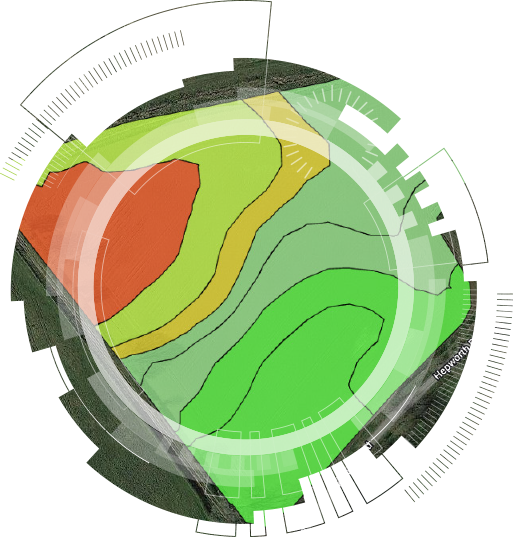Zone mapping utilises either soil variation or field variation maps.
Predetermined soil sampling points are set within soil type or productivity zones.
Basing soil sampling on variation maps is not only a more effective use of the variation maps but also adds greater accuracy to your nutrition variation.
Service use
Variable rate P, K, Mg and pH
Zone scans not included
Benefits
Highly accurate results
Identifying areas which require less/more nutrients
What is involved
Utilise previous soil type scans or field variation scans to accurately place soil sample points
The sampler is guided to each sample point to collect 16 sub-samples
The sampler is able to relocate sampling points due to factors that could lead to inaccurate readings, such as cattle feeders, muck heaps or wet holes
Samples are logged and set to the laboratory for analysis
Some soil types have the ability to hold certain nutrients better than others and a site-specific point within a zone will show this. However, variation can also occur within a particular zone, therefore overlaying 1ha grids over the variation maps is the most accurate way to determine nutrient levels. Each sample will still consist of a minimum of 16 cores.
Information required for application data:
Type of analysis – standard is S1 (P, K, Mg and pH). Further nutrients can be added for an additional fee. Two popular additions are Ca and OM.
Cropping – to create a fertiliser recommendation the decision support team require crop information, yield, target pH, muck information and straw policy.
Once these reports have been created it is then time for a discussion with the grower and agronomist.
Key Points to view in the results table:
 The cropping form should be updated yearly for new recommendations. Four years of recommendations are supplied with this service.
The cropping form should be updated yearly for new recommendations. Four years of recommendations are supplied with this service.
Application maps can be made for all major manufacturers’ equipment. Your precision specialist can advise on file type and format.
This service can also be loaded onto the Agrovista portal ‘Insight’. For a greater depth of knowledge, it is suggested that a broad spectrum Solvita analysis (a measure of soil biology) is carried out for the whole field.


